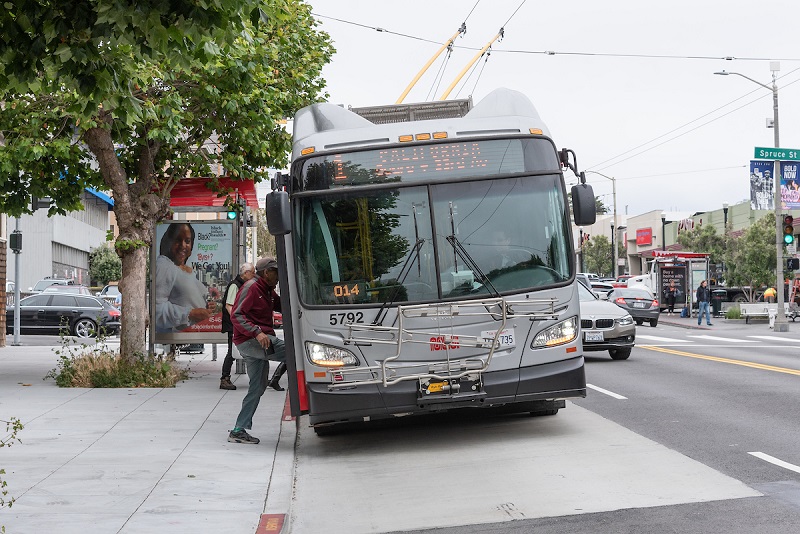هي جمعية ثقافية شبانية للتراث تعنى بمحافظة على الموروث الثقافي للمنقطة تمنغست بلدية عين أمقل الحزائر وهي عبارة عن أفضل الرقصات الفلكلورية التقليدية في المنطقة تمنغست من رقصة قرقابو * دراني * و رقصة اصارة و رقصة تاكوبا و موسيقى عصرية التوارق من اجل تعرف على الموروث الثقافي الرجاء الاشتراك في القناة ليصلك كل جديد
الثلاثاء، 3 مارس 2020
Show HN: An Online Intel 8080 Disassembler https://ift.tt/2PK36cm
Show HN: A library I wrote to perform statistical analysis https://ift.tt/3alfdUM
Show HN: Web App for generating mocked data from an OpenAPI specification https://ift.tt/39rKntW
Show HN: Running Clang in the Browser via WebAssembly and WASI https://ift.tt/3aody0P
Launch HN: Flowdash (YC W20) – Human-in-the-loop tooling for operations teams https://ift.tt/2TkoYwR
Show HN: InventHub – Visual version control for electronics design https://ift.tt/2x2qpY5
SFMTA Public Meetings March 3 - March 16
By
Board of Directors Meeting
Tuesday, March 3, 1 p.m.
City Hall, Room 400
Nearby Muni Routes: 5, 19, 21, 47, 49, F Market, Civic Center Station
The SFMTA Board of Directors provides policy oversight for the safe and efficient transportation of goods and services in San Francisco. This includes the San Francisco Municipal Railway (Muni), automobiles and trucks, taxis, bicycling and walking. The SFMTA Board of Directors also serves as members of the San Francisco Parking Authority.
Our board of directors meetings are usually held on the first and third Tuesdays of each month. The agenda includes presentation and discussion regarding transit service and changes to various rates, fees, charges, and fines.
Pedestrian Safety Advisory Committee (PSAC) Meeting
Tuesday, March 10, 6 p.m.
City Hall, Room 400
Nearby Muni Routes: 5, 19, 21, 47, 49, F Market, Civic Center Station
The PSAC has been charged with providing expertise on issues concerning pedestrian safety, convenience, ambiance and planning as well as advocating for pedestrian safety by engaging the public, Board of Supervisors and other relevant agencies. To better engage these entities, PSAC has documented their observations about the current state of pedestrian safety in San Francisco and their recommendations for improvements.
It is in the public interest to officially recognize walking as an important component of our transportation system, and as a key component to creating livable and suitable communities. The Pedestrian Safety Advisory Committee, composed of concerned and informed residents, was established to provide insight into issues concerning pedestrian safety, convenience, ambiance and planning.
California Street Safety Project Meeting
Thursday, March 12, 6:00 p.m.
St. James Preschool
Nearby Muni Routes: 1, 2, 28, 33, 38, 44
Join Supervisor Fewer and SFMTA staff on Thursday, March 12 to hear about next steps for the California Street Safety Project. At this meeting, SFMTA staff will present the project plans, including details on what the street will look like once the road diet is implemented in April 2020. Attendees will be able to ask questions about why we’re implementing the road diet, the additional data we collected based on community feedback, how we’ll be collecting street data, and when the changes to the road will be implemented. Staff will also give details on the data we’ll be collecting and how you can give feedback over the 2-year evaluation period that will begin after the road diet is in place.
Our Meeting Round-Up feature highlights different SFMTA public meetings that will be held within the coming two weeks. These meetings give you the chance to share your ideas and provide us with helpful feedback. Join us at our next meeting to learn more about SF's changing and complex transportation system.
Those listed above are just a few highlights. You can find a full list of upcoming meetings to keep up to date on your favorite SFMTA committees.
Published March 03, 2020 at 07:09PM
https://ift.tt/2IsWbQN
